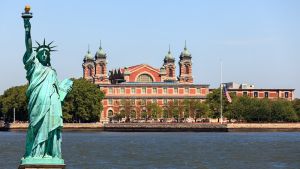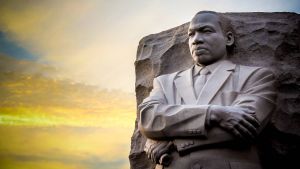In a major new push to help increase diversity and inclusion in the world of STEM, the National Aeronautics and Space Administration (NASA) has announced that it will soon be supporting academic programs at several of the nation’s leading Historically Black Colleges and Universities (HBCU) and other Minority-Serving Institutions (MSI). In total, NASA will invest $18 million in funding for programs focused on science, technology, engineering and math.
Michael T. Nietzel of Forbes reported that “the new investments at more than a dozen institutions will support research addressing three of the agency’s top priorities: understanding and monitoring global ocean health, returning humans to the Moon through the Artemis program, and helping build a more inclusive workforce. It will also give a big boost to STEM diversification.”
The investment is part of NASA’s Minority University Research and Education Project (MUREP) administered through its Office of STEM Engagement. According to Nietzel, “the $18 million in competitive awards will enable the institutions to tackle some of NASA’s most pressing challenges while simultaneously increasing their own research capabilities so they become more competitive for future grants.”
In a statement, Mike Kincaid, NASA’s associate administrator of STEM Engagement, said, “NASA thrives on big goals and monumental challenges, and these demand the brightest minds from the broadest variety of backgrounds and experiences. We’re reaching out to historically underrepresented and underserved communities and creating as many avenues as we can to bring them on board, whether it’s through awards such as these, NASA internships and fellowships, or other engagements.”
“MSIs bring their own, diverse viewpoint to answering the research questions NASA continues to seek,” added MUREP manager Torry Johnson. “By broadening participation, MUREP looks to expand the pool of institutions that engage in these critical science and technological discussions while at the same time introducing potential candidates that will aid in reimagining the future STEM workforce.”
Earlier this summer, NASA awarded 10 HBCUs and MSIs with grants totaling $6.6 million. The grants will help increase research development within the areas of ocean biology and biogeochemistry. The institutions receiving the grants were:
- Florida Atlantic University
- Northwest Indian College Foundation
- Texas State University
- University of Puerto Rico – Mayagüez
- University of Alaska – Fairbanks
- University of California – Irvine
- University of California – Merced
- University of Hawaii – Hilo
- University of Massachusetts – Boston
- University of the Virgin Islands – Charlotte Amalie
NASA also awarded $3.5 million in grants to seven institutions that will contribute research for NASA’s Artemis program, which will send the first woman and first person of color to the Moon.
The schools receiving those grants were:
- Fayetteville State University
- Florida International University
- Howard University
- New Mexico State University
- San Diego State University
- University of Arizona
- University of Central Florida
Finally, NASA also pledged $7.2 million to six academic institutions to promote diversity and representation within the engineering field. The schools receiving those grants were:
- Alabama State University
- Florida A&M University
- J.F. Drake State Technical College
- Navajo Technical College
- Texas A&M Kingsville
- University of Massachusetts – Boston
NASA’s Deputy Program Executive, Gynelle Steele, elaborated on the breadth and academic richness of MSIs, saying the investments will allow NASA to “tap into underutilized innovation and talent. We’re hopeful that these planning grants will create the foundational partnerships needed to successfully enhance the potential for long-term collaboration [with these institutions].”
According to Nietzel, “NASA’s initiatives complement the recent decision by the National Science Foundation (NSF) to invest $50 million in five new NSF INCLUDES Alliances that will ‘enhance preparation, increase participation and ensure the inclusion of individuals from historically underrepresented groups in STEM education.’”
Based on current government data, Blacks, Native Americans and Latinx individuals make up just over 30% of the U.S. population. However, these groups, along with women, the disabled and people from low-income backgrounds, remain vastly underrepresented within STEM industries.
“Those are gaps that higher education and the private sector have been trying to close for years, and while there’s been some progress, the gaps remain stubbornly difficult to bridge,” Nietzel said. “The NASA and NSF initiatives represent a significant — and needed — federal push to educate a more inclusive science and engineering workforce.”
Related: For more recent diversity and inclusion news, click here.


















